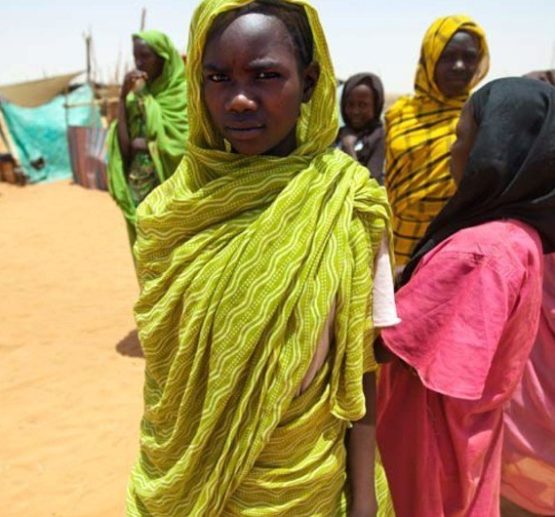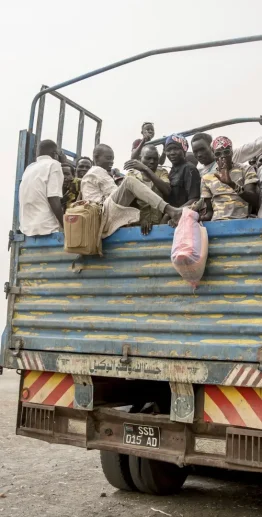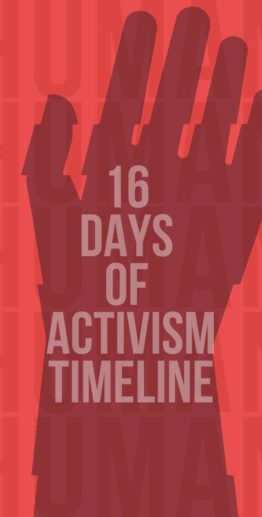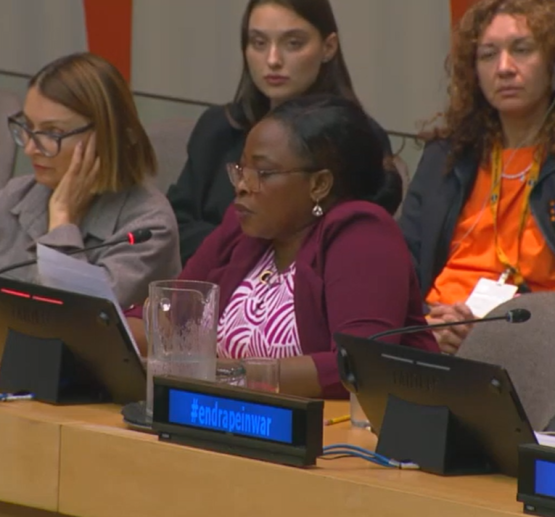Ten years with no choice
Ten years with no choice
June 20, 2013
By: Haley Aubuchon
Today is World Refugee Day. The UN adopted world Refugee Day in December 2000 and on this day we recognize the struggles, impossible decisions, and resilience of refugees around the world.
The theme of this World Refugee Day is choice. The UN states that “refugees have no choice” and is unveiling a new campaign called “Decisions” that depicts the terrifying decisions refugees have to make between staying in their conflict ravaged homes and the possible dangers and hardships of fleeing. The goal is to help “the public to empathize with, and understand, their dilemma”. Although I believe it is impossible to understand the dilemma of a refugee and the horrors they have experienced, in the spirit of this year’s theme, here are some insights into the lives of Darfuri, refugees, taken directly from recent news.
As of September 2012, Chad was hosting more than 288,000 refugees from Darfur in camps along the Chad-Sudan border. As of January 1, 2009 there were more than 2.6 million internally displaced persons (IDPs) in Darfur. Darfur has remained violent and unsafe, so return has not been an option for most IDPs. In fact, more people continue to flee affected areas; 300,000 Darfuris have been displaced between January and mid-May 2013. Although these IDPs are not considered refugees, as they have not crossed international borders, they have fled their homes and are living in camps and they deserve recognition on this day. Unlike refugees, IDPs remain under the protection of the Sudanese government, the very government that has perpetrated genocide against them.
Life in IDP and refugee camps is characterized by poor conditions and a lack of resources. In early June, five of nine IDP camps in West Darfur were found to have insufficient water supplies. In Chad, refugees were being transported away from camps on the border with Sudan because of the rainy season and safety concerns. The settlement that they have been moved to does not yet have adequate water to support all of the newcomers.
Huge influxes of newly displaced persons put strains on camp resources and newly displaced people must often wait for food and shelter that they need desperately. More than a month after an early April clash in Central Darfur 2,500 newly displaced families had not received any aid and were living out in the open with no food. The number of primary school aged-children in Kamala camp in South Darfur has risen to 22,000. There is a severe lack of teaching materials and space in schools; 4,357 of the children to not attend school at all.
One reason for this lack of aid is clearly related to budget and capacity. $685 million in aid went to Darfur in 2010 for food, health, infrastructure, sanitation, education, and other needs. This is clearly not enough to keep up with demand as more and more people are being displaced, markets are closing, and water pumps break and need to be replaced. However, another huge obstacle to providing aid to Darfur is a lack of cooperation from the Sudanese government. In mid-June Sudanese authorities refused to grant humanitarian groups access to 4,000 people affected by fighting in Central Darfur. Only four NGOs are currently operating in the affected area.
Disease is another huge problem for refugees and IDPs living in camps. These camps provide a deadly combination of a lack of sanitation, close living quarters, and a lack of health services which together can cause disease to run rampant. The recent arrival of new IDPs in El Salam, a South Darfur camp overwhelmed camp resources and disease killed twelve children and two women. The symptoms of diarrhea, coughing, and vomiting have spread through the camp and are too much for the single small health center to combat. The rapidly arriving rainy season will only make the situation worse in Darfur. Displaced people are often living out in the open with no shelter from rain or sun, which was the case on Thursday, June 6, when torrential rain in the Kamala camp in South Darfur led to the deaths of three children and the illness of many more. Sixteen people from the camp were reported to be ill, including seven who were considered severe and being treated at the understaffed and undersupplied camp hospital.
Security concerns also pose a threat to Darfuri refugees and IDPs. They have left their homes to escape violence and instability, but the camps do not keep them safe. Rape, beatings, and gun violence happen often in and around many IDP and refugee camps as displaced people are often targeted by militia groups. Even refuge camps on border regions in Chad are at risk, as refugees were moved away from the Tissi camp due to security risks as well as the approaching rainy season. The police, the Sudanese Army, UNAMID, and camp directors at El Salaam camp in South Darfur agreed upon a nighttime ceasefire to improve security in the camp, however, the ineffectiveness of this agreement was made clear when another shooting occurred shortly after it was signed.
Newly displaced persons at Garsila camp in Central Darfur live in fear of attacks by the rival tribesmen or pro-government militiamen that caused them to leave their homes in the first place. They receive no protection from UNAMID or government entities and feel that they would have no recourse should an attack occur. This is prompting many displaced Darfuris to consider moving yet again to another area they consider safer. These threats do not only put displaced persons and refugees in physical danger and haunt them emotionally. Fear of violence in West Darfur caused the Armenkol market to close. This, combined with fear of being caught by militias while traveling, caused a food shortage in the area, as there was nowhere to buy it.
There are few solutions to these complex and interconnected problems. Security concerns can cut IDPs and refugees off from food or safe water and the influx of new people is constantly overwhelming camp resources. Many people hope for resettlement, but the conflict in Darfur is not ending, instead is intensifying and more people are becoming displaced. Although camps are overwhelmed, voluntary resettlement is certainly not an option for these Darfuri people. However, IDPs at El Salam camp have reported that officials of the Darfur Regional Authority have attempted to coerce them into agreeing to return to their homes. The officials threatened to withhold the 100 sacks of sugar that had been sent as aid to the camp until inhabitants agreed to return home. This attempt to force people back to dangerous locations is doubly disturbing, as the 100 sacks of sugar would provide only a miniscule amount for each of the thousands of people in the camp. It is clear that the only way for these people to return home is to end to the violence and genocide that has been happening for more than ten years.
This tiny snapshot of life in refugee and IDP camps for Darfuri people demonstrates that they truly have no choice, no recourse, and nowhere to turn. World Refugee Day is an important day to think about the lives of refugees, but also to remember the second part of the UN theme; “Refugees have no choice. You do.” It is not enough to simply “empathize with, and understand” what refugees face, but to do something about it. Tell someone you know about the refugee situation in Darfur. Donate to provide the aid that is so desperately needed. Most importantly, lobby your government to work to create peace and bring refugees and IDPs home. You have a choice; choose to take action.
Haley Aubuchon,, Communication Intern at Darfur women Action Group



